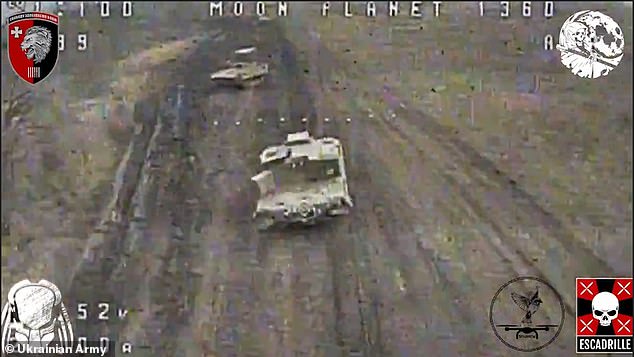The moment Ukraine destroys a rare Russian armoured vehicle first used at the Chernobyl nuclear disaster in drone strike
This is the moment Ukraine destroyed a rare Russian armored vehicle first used in the Chernobyl nuclear disaster.
Footage from the battlefield shows Ladoga’s nuclear command vehicle being disabled during a Ukrainian drone strike.
The Soviet-era vehicle was designed in the 1970s to move high-ranking Kremlin personnel in the event of a nuclear attack and was built using the chassis of a T-80 main battle tank.
In 1986, the vehicle was sent to the site of the Chernobyl nuclear disaster and is said to have performed well after the explosion of reactor No. 4 at the nuclear power plant.
But manufacturer LKZ built no more than four or five, including the prototype, which was sent across the country for further testing.
His appearance on the Ukrainian battlefield draws attention to Russia’s difficulties in replacing the current tank fleet, which has suffered severely since the war began two years ago.
Battlefield footage shows Ladoga’s nuclear command vehicle being disabled during a Ukrainian drone strike

The old-fashioned vehicle was designed in the 1970s to move high-ranking Kremlin personnel in the event of a nuclear attack
According to an estimate from sources in Kiev, Vladimir Putin’s forces have lost 6,904 tanks since invading Ukraine on February 24, 2022.
To counter this, Moscow officials have brought outdated tanks out of storage, some of which can be seen dating back to the 1950s in photos and videos posted online.
AFV Recognition, an authoritative social media account that tracks Russian armor, said The Telegraph: ‘Of all the vehicles taken out of storage and used by Russia in this war, this was really at the bottom of my list to even see in theaters, let alone destroy.’
Russia claims that since the start of the war it has increased production of new tanks to replace those lost in the fighting.
But experts believe the military is actually refurbishing older equipment that has been in storage since the end of the Cold War or possibly longer.
